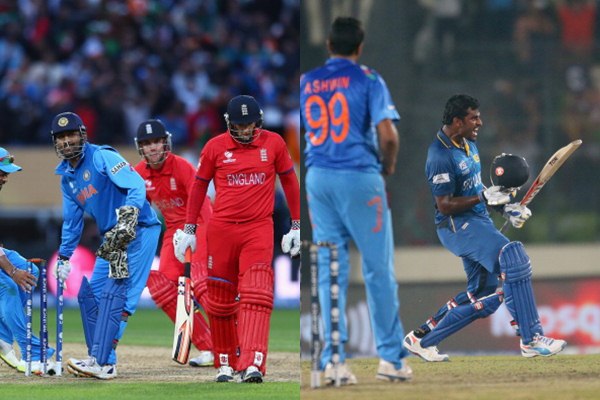5 reasons why ODIs and T20Is are not quite the same
3 Min Read


5 reasons why ODIs and T20Is are not quite the same: Cricket is a hugely exciting and diverse sport. You see incredible tight finishes and also some one sided games. The impact of T20s on the 50-over format is beyond statistical parameters. The real impact though, started to show up when teams became increasingly confident of chasing down any total. Batsmen now realize that if they can save wickets in the first 30 overs, then they can virtually chase down any total in the last 15 to 20 overs. All of that might lead us into thinking that T20s and ODIs are pretty much similar in nature and character. The two formats are alike in some ways, but they are entirely different in others.
So here are the 5 reasons why ODIs and T20Is are not quite the same:
1. T20 cricket demands more variations in bowling:
Though both the ODI and T20I are limited overs formats and favour the batsmen more than bowlers, bowling in T20 cricket is an even more difficult art. The batsmen are always looking to go after the bowlers, and give no respect to the quality and experience of the bowler. Having more variety improves your chances of not allowing them to play freely. If you keep the batsman guessing, you prevent him from going through with premeditated slogs. It is no wonder that bowlers like Sunil Narine are so tough to face in this format.
On the other hand, in ODIs batsmen have time to settle in and play the ball on its merit, thus reducing the importance for a bowler to try and bowl 6 different deliveries in an over.
2. Power hitting more prominent in T20s:
Though both formats encourage power hitters, the T20 format is especially encouraging for the big hitters. Because of the nature of the format, one or two overs can decide the outcome of the game. That increases the importance of having players like Glenn Maxwell and Kieron Pollard in your side, who can win you a game with 4-5 lusty blows. In ODIs, you generally need a prolonged spell of controlled aggression to take your team to victory. In T20s, one over of madness can win your side. That makes having power hitters imperative in the shortest format.
Also Read – Top 10 teams that have lost most matches in International Cricket
3. The skipper needs to be more proactive in T20 matches:
T20 is a very fast-paced contest. The game keeps changing every few overs, and captains need to always be proactive, and plan ahead. They also have to keep making swift changes based on what is happening in the middle. Unlike ODI cricket, where the fast bowlers often bowl long opening spells and spinners bowl in middle overs, T20 often sees frequent bowling changes and out-of-the-box ideas. Captaincy thus becomes more crucial in this format.
4. Fielding is of paramount importance in T20s:
In saying this we are not downplaying the role of fielding in the ODI format but in most T20 games, the margin of victory or defeat is often very marginal. That means runs saved through brilliant fielding efforts are worth their weight in gold. All teams want to have young and fresh legs in the field to ensure that the batting team is on its toes. While good fielding is also important in ODI cricket, a few runs given through misfields do not usually harm the side as much as they would in a T20 game.
5. Reading the pitch is very crucial in ODIs:
In ODI cricket, we often see the pitch changing its nature in the 2nd innings. Several matches are decided on the basis of how do batsmen from each side counter the prodigious swing or spin which the pitch offers. That makes the toss all the more crucial, if luck is not on your side in an ODI game, you may end up facing the worst of the conditions. In the T20 format on the other hand, due to the shorter duration of the game, the pitch remains more or less the same in both the innings and as such, winning the toss doesn’t give any side an unfair or distinct advantage.
Download Our App